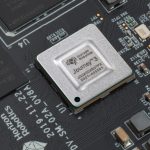
Across the globe, healthcare providers are facing the same three questions. How do we improve patient care? With growing populations, how can we help more people? And how can this be achieved with budgets that have been under pressure?
Finding a solution to these questions is increasingly reliant on technology. As a result, the responsibility of addressing these issues is falling to the IT department within healthcare institutions. Once focused solely on ‘keeping the lights on’, IT has evolved to become a strategic element within healthcare. It’s now a team focused on helping to reduce costs, on making more resources available for medical professionals and on making medical innovation a reality within the organisation.
It’s always been the case that by understanding more about a patient, doctors can more accurately diagnose an issue. Now medical professionals can use data in addition to their patients concerns to help them better understand symptoms. Everything from medical phone apps to new imaging technology is providing reams of data to support diagnosis. For example, by combining information on a patient’s lifestyle with data on their DNA structure, hereditary abnormalities in the family, heart rate and blood pressure, steps can be taken to prevent certain illnesses altogether. Prescribing medication or lifestyle changes that are precisely and fully focused on the physiology of that single patient. These new innovations, and the data they generate, are increasingly helping medical professionals deliver.
However, enabling all of this data to be accessed in the right time, in the right place and in the right format is a significant IT challenge. Estimates suggest that vast majority of all data in an organisation is unstructured. To enable healthcare providers to benefit from this data, IT is increasingly looking towards advanced real-time analytics and ‘deep learning’ using advanced technologies, such as artificial intelligence (AI) and machine learning, to support the processing and delivery of data.
There’s no doubt that these technologies provide incredible advantages across a huge range of industries. In healthcare, the application of real-time analytics can help to detect and diagnose diseases faster, reduce time-to-treatment, lower costs and eventually lead to better patient care and outcomes.
We’ve seen the potential impact of this with the AMPLab at UC Berkeley, which developed a real-time analytics engine to analyse genetic make-up. This analysis allows doctors to deliver medicine which is more precisely tailored towards each patient. By combining this engine with flash storage the Lab has also significantly reduced the time needed to sequence data-intensive DNA samples and analyse results. As a result, researchers and clinicians can sequence a greater volume of DNA samples in far less time, generating valuable new insights and, in some cases, delivering faster answers to life-and-death questions.
But implementing advanced real-time analytics or an AI project isn’t that simple. Huge amounts of data needs to be processed and analysed at speed, in order to make the split-second decisions that the technology is capable of. As a result, these projects need a very solid infrastructure and significant compute power to work effectively.
Traditional data centres for healthcare organisations have done reasonably well in terms of enabling healthcare practitioners to deliver patient care. But they were never built with the intention of running the demanding data applications now being used. The future with these applications, AI and machine learning, requires a different approach to data centre infrastructure. An approach with a particular focus on storage, designed to deliver massively-parallel access to data at a very high bandwidth.
But here’s the dilemma, how to do this whilst dealing with constrained budgets? The answer lies in flash. An all-flash data platform, purpose built for modern analytics and deep learning can enable healthcare organisations to realise the potential of AI faster, on a far smaller footprint than traditional infrastructure for high-performance computing would provide.
Healthcare providers today require a data platform that enables them to deploy a new class of applications, to extract new insights from data and to do so in real-time. By ensuring innovations like AI and advanced analytics are supported from the data centre level up, they should be able to run operations with cloud-like agility, improve the economics of data analytics at high velocity and scale, and derive new insights to deliver data-driven patient outcomes and results not possible before. Ultimately, by transforming how the organisation can handle and process data, IT teams will enable practitioners to deliver the best level of integrated care possible to more people.
About the author: Peter Gadd is regional VP EMEA at Pure Storage.





